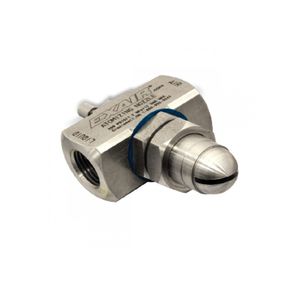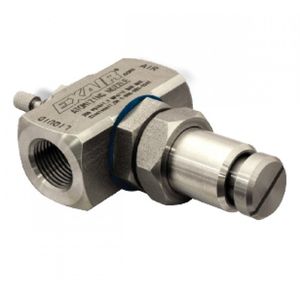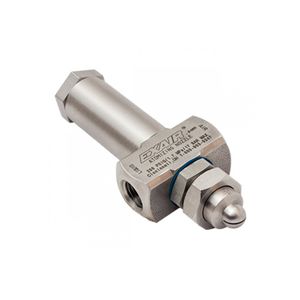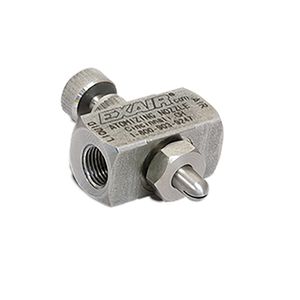
- Products
- Catalogs
- News & Trends
- Exhibitions
Siphon fed atomizing nozzle SF8010SSatomizingfor liquidscompressed air
Add to favorites
Compare this product
Characteristics
- Function
- atomizing
- Fluid
- for liquids, compressed air
- Stream
- flat spray
- Material
- stainless steel
- Other characteristics
- siphon fed
- Orifice diameter
0.13 in, 0.25 in
- Flow
Max.: 1.9 us gal/min
(7.19 l/min)Min.: 0.4 us gal/min
(1.51 l/min)- Pressure
Max.: 4.1 bar
(59.5 psi)Min.: 0.7 bar
(10.2 psi)
Description
Model SF8010SS Siphon Fed Flat Fan Atomizing Nozzle
EXAIR's 1/8 FNPT and 1/4 FNPT siphon fed flat fan pattern nozzle is great where no liquid pressure is available and a thin coating is needed over a wide band. Flow rate is adjustable via the adjusting valve. Siphon nozzles work best with a suction height of 36" (914mm) or less. Since these nozzles are siphon fed, the compressed airflow draws the liquid in and mixes it internally. Liquid flow is dependent both on the gravity or suction height and the airflow. Siphon fed flat fan pattern nozzles are the best choice where liquid is needed over a broad band such as a moving assembly line. Siphon or gravity fed for non-pressurized applications.
Applications
Washing
Rinsing
Coating
Cooling
Quenching
Wetting (moistening)
Humidification
Dust Control
Advantages
Fully adjustable
Maximizes liquid dispersion
Minimizes liquid consumption
All stainless steel construction
Compact
Versatile
Interchangeable liquid and air caps
Minimizes air consumption
Fine atomization
Atomizing Nozzle Materials
Type 303 Stainless Steel - All of EXAIR's Atomizing Nozzles are constructed with Type 303 stainless steel, which can resist high temperatures and corrosive environments. They are designed for environments with a maximum operating temperature of 800°F (426°C).
Catalogs
Related Searches
- Fitting
- Screw-in fitting
- Pneumatic fitting
- Stainless steel fitting
- EXAIR spray nozzle
- EXAIR liquid nozzle
- EXAIR stainless steel nozzle
- Manual gun
- Male fitting
- EXAIR cleaning nozzle
- Threaded nozzle
- EXAIR multi-jet nozzle
- EXAIR air nozzle
- Brass atomizing nozzle
- EXAIR flat spray nozzle
- EXAIR cooling nozzle
- Swivel fitting
- EXAIR plastic nozzle
- Full-cone atomizing nozzle
- EXAIR industrial nozzle
*Prices are pre-tax. They exclude delivery charges and customs duties and do not include additional charges for installation or activation options. Prices are indicative only and may vary by country, with changes to the cost of raw materials and exchange rates.



















